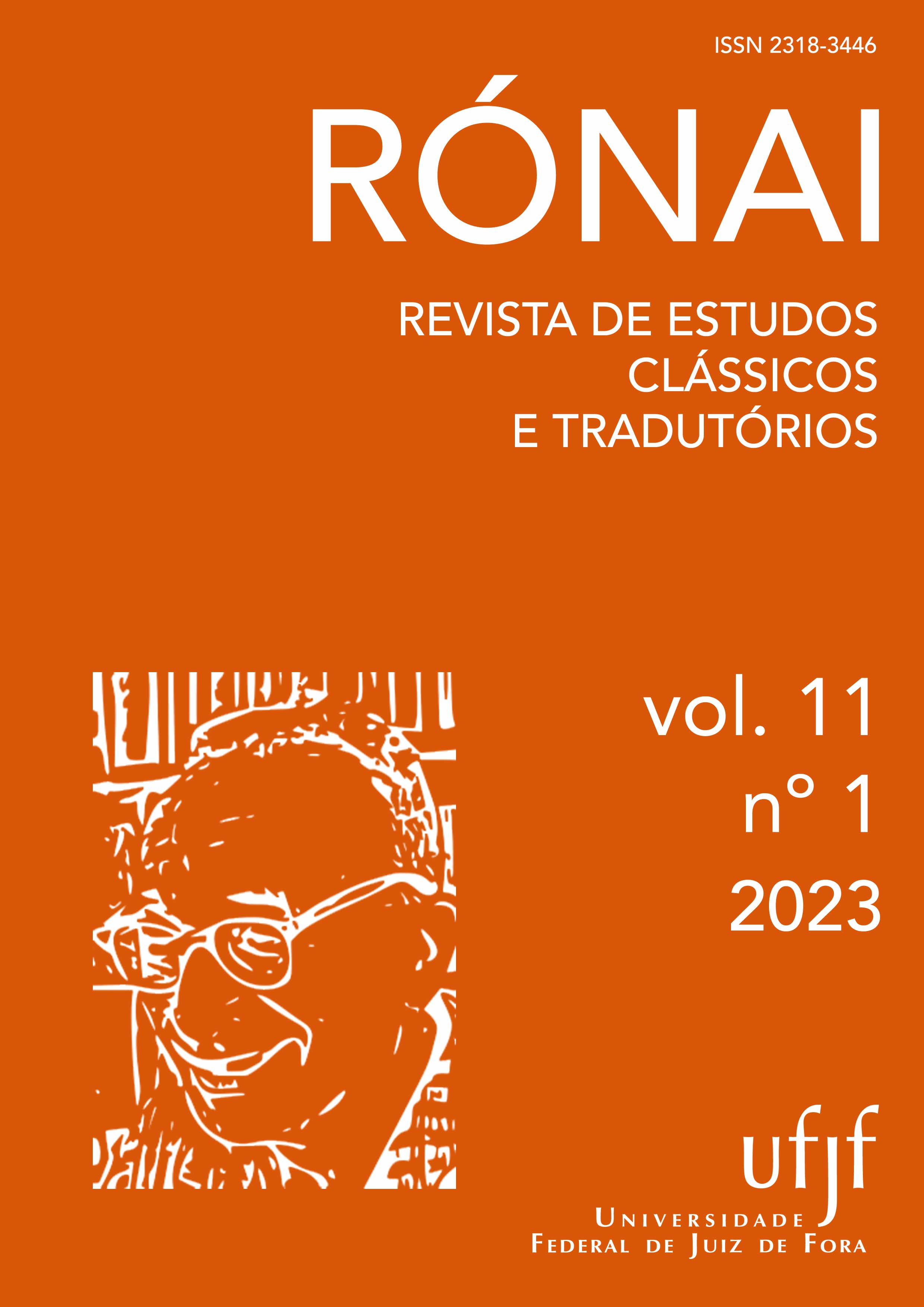Two women’s chants to the sound of teponaztli of Cantares mexicanos
DOI:
https://doi.org/10.34019/2318-3446.2023.v11.40446Keywords:
Cantares mexicanos, Cihuacuicatl , Classical Nahuatl, Brazilian Portuguese, TranslationAbstract
This is an unpublished translation from Classical Nahuatl into Brazilian Portuguese of two cihuacuicatl or chants of women, both accompanied by the teponaztli. They are part of the Cantares mexicanos, a New Hispanic manuscript preserved at the National Library of Mexico. The chants are found on folios 42v to 43r and 72r to 73v. Their title’s translation are “Canto de mulheres sobre a ressurreição de Nosso Senhor” and “Canto de mulheres Chalca”, respectively. The first chant is a colonial composition, dated 1536, and its content is extremely Catholic. The second, undated, constitutes a pre-Hispanic creation compiled in the colony (c. XVI), whose content refers to historical events of 1473 and 1479 expressed in the form of an erotic metaphor.
Downloads
References
BIERHORST, John. Cantares mexicanos. Songs of the Aztecs. Stanford: Stanford University Press, 1985.
Cantares mexicanos [manuscrito]. In: MS 1628 bis. México: Biblioteca Nacional de México, 85 f.
Cantares mexicanos. Paleografía, traducción y notas de Miguel León-Portilla. México: UNAM, Coordinación de Humanidades, Instituto de Investigaciones Bibliográficas, Instituto de Investigaciones Filológicas, Instituto de Investigaciones Históricas, Fideicomiso Teixidor, 2011.
CHIMALPAHIN CUAUHTLEHUANITZIN, Domingo Francisco de San Antón Muñón. Séptima relación de las Différentes histoires originales. Introducción, paleografía, traducción, notas, índice temático y onomástico y apéndices de Josefina García Quintana. México: UNAM, Instituto de Investigaciones Históricas, 2003. Disponível em: https://historicas.unam.mx/publicaciones/publicadigital/libros/septima_relacion/405_04_05_1451-1500.pdf Acessado em: 28/02/2023.
DURÁN, Diego (fray) (1581). Historia de las Indias de Nueva España e Islas de la Tierra Firme. Tomo II. México: Cien de México, 1995.
GARIBAY, Ángel María (1940). Llave del Náhuatl. Ciudad de México: Porrúa, 10. ed., 2013.
LELIS, Sara; MÁYNEZ, Pilar. Libro Tercero del Códice florentino. Proyecto Paleografía y Traducción del Códice florentino, 2023, 189p.
SAHAGÚN, Bernardino (1577). Historia general de las cosas de la Nueva España, I. Introducción, paleografía, glosario y notas de Alfredo López Austin y Josefina García Quintana. México: Dirección General de publicaciones del Consejo Nacional para la Cultura y las Artes, 1989.
THOUVENOT, Marc. La normalización gráfica del Códice Florentino. In: Pilar Máynez e José Rubén Romero Galván (coords.). El universo de Sahagún, pasado y presente 2008. México: UNAM, 2011.
TURRENT, Lourdes. La conquista musical de México. México: Fondo de Cultura Económica, 1993.
Downloads
Published
How to Cite
Issue
Section
License
Copyright (c) 2023 Sara Lelis de Oliveira

This work is licensed under a Creative Commons Attribution 4.0 International License.
Copyright
The authors of the published contributions agree with the following items:
1. The authors keep the copyright and convey to the journal the right of first publication, the work being licensed under a Creative Commons Attribution License 4.0 International.
2. The authors are allowed and stimulated to publicize and distribute their work online after the publication in the journal, recognizing first publication in this journal.
3. The authors of the approved works authorize the journal to distribute their content, after publication, for reproduction in content indexes, virtual libraries and similars.
For more information about Creative Commons Attribution License 4.0 International, please, go to: https://creativecommons.org/licenses/by/4.0/deed.en
Editorial exemption
The authors of the published contributions are entirely and exclusively responsible for their contents. Its content does not represent an official position of Rónai - Revista de Estudos Clássicos e Tradutórios neither of Faculdade de Letras da Universidade Federal de Juiz de Fora or their partner institutions.



